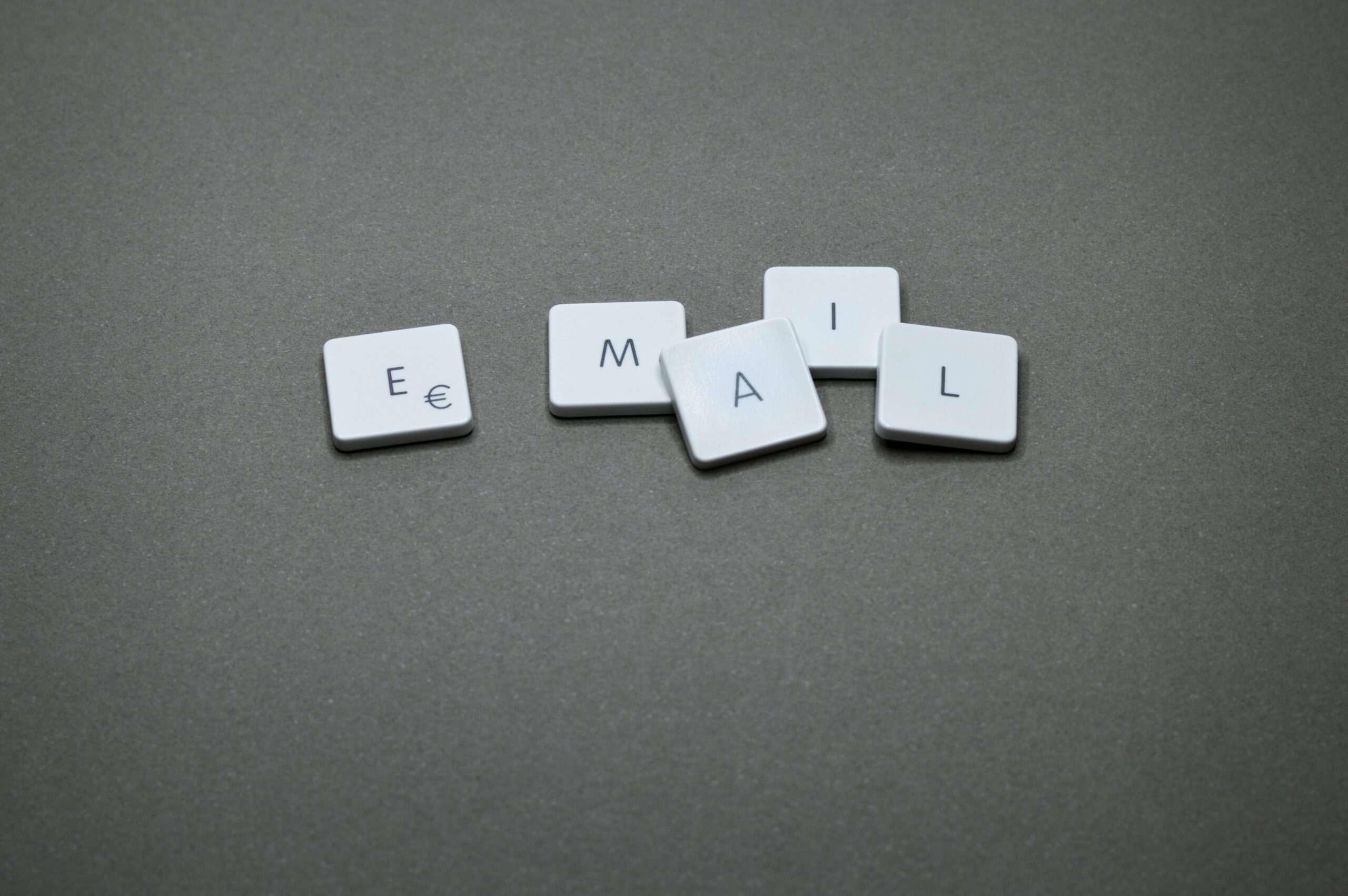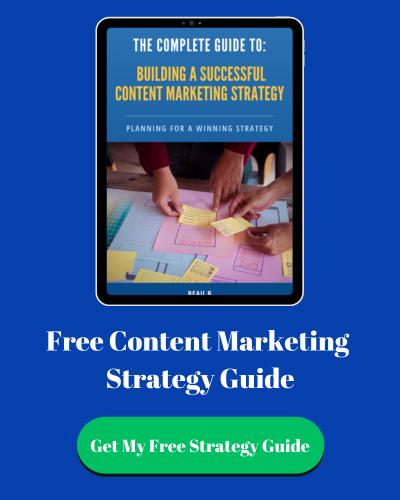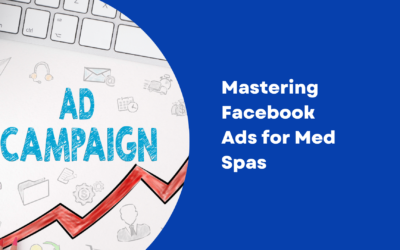Email marketing is one of the most effective ways to reach your customers and grow your business. But with so many businesses using email to connect with their audience, it can be challenging to stand out from the crowd. In this blog post, we will cover everything you need to know about crafting a successful email marketing strategy that drives results for your business.
From understanding the importance of email content for small businesses to setting goals, building quality lists, crafting engaging content, optimizing calls-to-action, leveraging social media, segmenting your list, re-engaging inactive subscribers, and analyzing your metrics – we’ve got you covered! By the end of this post, you’ll have all the expert tips and tricks you need to create an email marketing campaign that resonates with your audience and drives conversions.
Understanding the Importance of Email Marketing for Small Businesses
Email marketing is a powerful tool for small businesses, allowing them to reach a large audience at a low cost. It helps build customer loyalty and trust, driving sales and increasing revenue. By targeting specific segments, email marketing can yield higher response rates. Small businesses can benefit from email design, using platforms like Campaign Monitor to create visually appealing emails. From sending a welcome email to new subscribers, to nurturing potential customers and turning them into new customers, email marketing is a good idea.
Building a contact list and utilizing marketing automation can provide the best results. It’s a great way to implement content marketing and engage with internet users on their mobile devices. The right timing for email campaigns, along with attention to details like preview text and a compelling text link, can enhance the user experience. Constant Contact can help small businesses achieve success in email marketing through its features and analytics.

The Role of Email Marketing in Business Growth
Email marketing plays a vital role in driving business growth. It serves as a powerful tool to generate leads and convert them into loyal customers. By nurturing customer relationships through personalized email campaigns, businesses can foster repeat sales and enhance customer engagement. In addition, email marketing is an effective way to build brand awareness and drive customer loyalty.
With the use of automation, email marketing can be scaled up to reach a larger audience, making it an essential component of any digital marketing strategy. Embracing email design best practices and leveraging marketing automation tools can yield the best results for businesses looking to maximize their email marketing efforts.
Why Email Marketing is Essential for Small Businesses
Email marketing has become essential for small businesses to stay competitive. It offers a direct line of communication with your target audience, allowing you to reach them right in their inbox. With email marketing, you can build a customer base and establish brand loyalty by delivering personalized marketing strategies. It’s a great way to increase customer retention and keep your business top of mind. By leveraging email design, campaign monitor, and marketing automation, you can ensure that your emails are engaging, mobile-friendly, and deliver the right message to the right people at the right time. Preview text and compelling subject lines are crucial for grabbing the attention of internet users and driving higher open rates. With email marketing, you have the power to nurture relationships with potential customers and turn them into loyal subscribers and new customers.
Setting Goals for Your Email Marketing Strategy
Setting clear goals is essential for an effective email marketing strategy. These goals can include increasing open rates, click-through rates, and conversions. It is important for your email marketing goals to align with your overall marketing strategy to ensure consistency and effectiveness. To set effective goals, it is recommended to use the SMART framework, which stands for specific, measurable, achievable, relevant, and time-bound goals. By regularly monitoring and analyzing campaign data, you can track your progress towards your goals and make necessary adjustments to optimize your email marketing strategy.
Email Marketing Tips for Success
Success in email marketing can be measured by various metrics, including open rates, click-through rates, and conversions. However, defining success also depends on your specific business objectives. For some, it may involve increasing sales, while for others, it could be about enhancing customer engagement. Building strong customer relationships and brand loyalty are also key indicators of success. Regular testing and optimization play a crucial role in achieving email marketing success. By analyzing campaign data, you can identify areas for improvement and make necessary adjustments to achieve the best results.
Key Performance Indicators for Email Marketing
When it comes to measuring the success of your email marketing efforts, there are several key performance indicators (KPIs) to consider. These include open rates, click-through rates, conversion rates, and unsubscribe rates. Additionally, other important KPIs may include list growth, deliverability, and response time. By understanding and tracking these metrics, you can effectively evaluate the effectiveness of your email marketing strategy. Benchmarking your performance against industry averages can provide valuable context, and continuously monitoring and analyzing these KPIs will help you optimize your email marketing efforts. Remember, data-driven decision making is crucial for achieving the best results in your email campaigns.
Building a Quality Email List
Building a quality email list is crucial for successful campaigns. To grow your list, utilize various strategies such as lead magnets, content upgrades, and social media. Make sure that subscribers opt-in and provide explicit consent to receive emails. Regularly clean your list by removing inactive subscribers. Additionally, segmenting your list based on customer preferences, demographics, or purchase history can improve targeting and engagement. By implementing these practices, you can ensure that your list consists of engaged and interested subscribers, which will ultimately lead to better results in your email marketing campaigns.
Strategies for Growing Your Email List
Offering valuable content, like e-books or webinars, in exchange for email addresses is a proven strategy to grow your email list. Promoting email newsletter sign-ups through social media and blog posts can also attract new subscribers. Implementing pop-up forms, slide-ins, or welcome mats on your website can capture email leads directly from your online visitors. Running contests, giveaways, or referral programs can incentivize email list growth by encouraging interaction and engagement. Leveraging partnerships or guest blogging opportunities allows you to tap into new audiences and expand your reach. Utilizing these strategies can contribute to the steady growth of your email list.
Maintaining a Clean and Active Email List
Regularly monitoring email bounces, unsubscribes, and spam complaints is crucial for maintaining a clean email list. It’s also important to remove inactive subscribers who haven’t engaged with your emails for a specific period. Sending re-engagement emails to inactive subscribers and removing those who don’t respond helps keep your list active. Compliance with email marketing regulations, including clear unsubscribe links and honoring opt-out requests, is essential. Additionally, regularly updating subscriber preferences and making it easy for subscribers to manage their email preferences ensures a clean and active email list.
Crafting Engaging Email Content
Crafting engaging email content is crucial for a successful email marketing strategy. Start by creating compelling subject lines that grab attention and encourage high open rates. Personalize emails by addressing subscribers by name or tailoring content to their preferences. Use clear and concise copy, focusing on the main message or call-to-action. Incorporate visually appealing design elements like images, videos, or GIFs to enhance engagement. Testing different formats, content lengths, and visuals is key to optimizing performance. By following these tips, you can ensure that your content captivates your audience and drives the desired results.
The Art of Writing Effective Subject Lines
Crafting subject lines that grab attention and entice open rates is crucial for email marketing success. Using clear, concise, and compelling subject lines can significantly increase email open rates. It’s important to experiment with different subject line strategies to find what works best for your audience. Incorporating personalization and curiosity in subject lines can boost open rates even further. Additionally, optimizing subject lines for mobile users ensures maximum visibility on mobile devices, which is essential since a large percentage of internet users access their emails on their phones. Remember, the right subject line can be the main reason why potential customers and new subscribers become engaged and open your emails.

Personalizing Your Email Messages
Personalizing your messages can greatly enhance your email marketing strategy. By addressing subscribers by their name, you create a sense of connection and make them feel valued. Segmenting your email list based on customer data allows you to deliver targeted, personalized content that resonates with your audience. Utilizing dynamic content enables you to provide personalized recommendations and offers, tailored to each subscriber’s interests and preferences. Automation tools further enhance personalization by delivering emails based on customer behavior. Incorporating these personalization techniques into your content ensures a more engaging and personalized experience for your subscribers.
How to Reuse Content Effectively
To effectively reuse content, repurpose your blog posts, white papers, and social media content into engaging emails. Create nhttps://www.campaignmonitor.com/blog/email-marketing/2018/04/7-stats-that-will-make-you-rethink-mobile-email/
ewsletters that feature your best content, keeping subscribers informed and engaged. Convert popular blog posts into email series, delivering content in bite-sized, digestible emails. Strengthen customer relationships by sharing user-generated content through emails, building social proof. Repackage content into different formats like videos, infographics, or e-books, and promote them via emails. By utilizing these strategies, you can maximize the value of your existing content and engage your audience across multiple channels.
Optimizing Calls-to-Action in Your Emails
Designing clear, visually appealing CTAs is essential for boosting click-through rates (CTRs) and improving email engagement. Action-oriented text like “Shop Now” or “Download Your Free Guide” can motivate recipients to take specific actions. To ensure maximum visibility, strategically place CTAs in emails. Testing different button styles, sizes, and colors will help optimize CTA performance, resulting in higher conversion rates. Adding a sense of urgency, such as limited-time offers, creates a motivation for immediate action. By implementing these strategies, you can enhance the effectiveness of your email marketing campaigns and drive better results.
Creating Compelling CTAs for Higher Engagement
Crafting effective CTAs is crucial for encouraging user engagement in your email marketing strategy. By using benefit-driven copy, you can highlight the value of taking action and entice users to click. Incorporating power words and verbs that evoke emotions adds urgency and excitement to your CTAs. To ensure clarity, keep your text concise and user-friendly, clearly communicating the desired action. It’s also important to pay attention to the design of your CTA button, making it visually appealing and easily distinguishable. Boost credibility by including social proof, customer testimonials, or guarantees near your CTAs. These strategies will increase engagement and drive conversions.
A/B Testing Your CTAs for Better Results
To improve the performance of your email marketing strategy, it’s essential to conduct A/B testing on your CTAs. By comparing different variations of your CTAs, such as button colors, text, placement, and design, you can determine which ones yield the highest conversion rates. Experimenting with different call-to-action phrases and wording can also help optimize click-through rates. Analyzing data and user behavior will provide valuable insights for making data-driven decisions on CTA improvements. Remember to continuously test and refine your CTAs to maximize email engagement and conversions. A/B testing is a powerful tool for enhancing the effectiveness of your email campaigns.
Making the Most of User-Generated Content
Making the most of user-generated content (UGC) is a powerful strategy to enhance your email marketing efforts. Encourage your customers to share their experiences, reviews, and content related to your brand. By showcasing UGC in your emails, you can build social proof and foster customer trust. Running contests or campaigns that incentivize customers to create and share UGC is a great way to generate more engagement. Additionally, using customer testimonials, reviews, and social media content as powerful social proof in your emails can further validate your brand and offerings. Harness the power of UGC to amplify the impact of your email marketing strategy.
Encouraging User-Generated Content Through Emails
To encourage user-generated content through emails, you can send requests to customers asking for reviews, testimonials, or any other user-generated content. Offering incentives like discounts, exclusive content, or giveaways can significantly boost customer participation. Utilizing email automation allows you to trigger these requests after specific customer interactions or purchases. To make it easy for customers to contribute content, provide clear instructions, guidelines, and examples. Additionally, express gratitude and acknowledge customers who contribute user-generated content in your emails. By implementing these strategies, you can effectively encourage users to contribute valuable content to enhance your email marketing campaigns.
Showcasing User-Generated Content in Your Email Campaigns
Incorporating user-generated content (UGC) can greatly enhance the effectiveness of your email marketing campaigns. By featuring customer photos, reviews, or success stories in your emails, you can create a sense of authenticity and engage your audience. Consider creating collages or galleries that showcase customer content, allowing you to highlight their experiences and build trust. Including customer testimonials and social proof in your emails further enhances credibility. Additionally, don’t forget to include clear call-to-action buttons that link to the customer content, encouraging further engagement. Leveraging UGC in your email campaigns is a powerful way to tell engaging brand stories and foster a strong connection with your audience.
Leveraging Social Media for Email Marketing
To maximize the impact of your email marketing strategy, it’s crucial to leverage social media effectively. One way to do this is by integrating social media icons and sharing buttons in your emails. This encourages social media engagement and allows subscribers to share your content with their networks. Additionally, promoting email list sign-ups through social media channels can help expand your subscriber base. You can also share email content, such as newsletter highlights, customer stories, or exclusive offers, on social media platforms. Running social media contests, giveaways, or polls is another effective tactic for driving email list growth and engagement. Finally, utilizing social media data and analytics can help you target social media users with more personalized and tailored email marketing campaigns.
Integrating Social Media into Your Email Marketing Strategy
To maximize the reach and impact of your email marketing campaigns, integrating social media platforms is essential. By promoting your email campaigns on social media, you can attract a wider audience and increase subscriber engagement. Adding social media sharing buttons in your email newsletters enables recipients to easily share your content with their network, expanding your reach even further. Creating compelling social media content that drives email sign-ups is a great way to capture the attention of potential customers and convert them into new subscribers. Additionally, cross-promoting your email content on social media platforms helps to reinforce your messaging and drive traffic to your emails.
Utilizing Social Media to Grow Your Email List
One effective way to grow your email list is by running social media contests or giveaways that require participants to provide their email addresses. Additionally, you can encourage your social media followers to join your email list in exchange for exclusive content or special offers. Another strategy is to use social media ads to target potential subscribers and drive them to your email landing page. Promoting your email newsletter sign-up through engaging social media posts can also attract new subscribers. Lastly, collaborating with social media influencers can help promote your email list to a wider audience.
Segmenting Your Email List for Targeted Marketing
Segmenting your email list is a key strategy for effective targeted marketing. By dividing your list based on customer demographics, preferences, or purchase history, you can send personalized email content that resonates with subscribers. Segmenting also allows you to tailor your campaigns for different stages of the sales funnel and create targeted messages for specific customer segments. Automation tools can help you segment your list based on subscriber actions or characteristics, ensuring that you deliver the right message to the right audience at the right time. This not only improves user experience but also ensures better results for your email marketing efforts.
The Benefits of Email Segmentation
Email segmentation offers several benefits to enhance the effectiveness of your email marketing campaigns. By personalizing your content based on subscriber demographics, preferences, or purchase history, you can achieve higher open rates and click-through rates. This tailored approach also improves customer engagement and response rates, leading to increased customer loyalty and retention. Additionally, targeted email campaigns yield higher conversion rates and sales, as they address the specific needs and interests of different customer segments. Ultimately, email segmentation enhances the customer experience and satisfaction by delivering relevant and customized content directly to their inbox.
How to Segment Your Email List Effectively
To segment your email list effectively, start by collecting relevant data from your subscribers. This information will help you understand their preferences and behaviors, allowing you to tailor your email content accordingly. Use email marketing tools and software to efficiently segment your list based on factors such as demographics, purchase history, and subscriber interests. Additionally, implement clear and simple subscription preferences to allow users to self-segment. Regularly review and update your email list segments based on customer behavior and preferences. Finally, conduct A/B testing to optimize your email segmentation strategies and achieve the best results.
Re-engaging Inactive Subscribers
Re-engaging Inactive Subscribers:
Identifying inactive subscribers is crucial for optimizing your email marketing strategy. By analyzing open rates, click rates, or performing an email list analysis, you can identify those who have become disengaged. Once identified, sending re-engagement emails with incentives like discounts or exclusive content is a great way to reignite their interest. Targeted email content tailored to their preferences and behaviors can also help reconnect with inactive subscribers. Implementing email automation allows you to trigger personalized emails for inactive subscribers at the right time. By tracking and analyzing the results of your re-engagement efforts, you can make adjustments for better outcomes.
Identifying and Reaching Out to Inactive Subscribers
Segmenting your email list is a crucial step in identifying inactive subscribers. By categorizing your subscribers based on their activity level, you can pinpoint those who have become disengaged. Once identified, personalized messaging can be used to re-engage these subscribers. Consider offering incentives such as exclusive content or discounts to encourage them to become active again. However, if all re-engagement efforts fail, it may be necessary to remove inactive subscribers from your list. This will improve your email open rates and overall engagement metrics. Remember to continuously monitor and adjust your email marketing strategy for optimal results.
Techniques for Re-engaging Inactive Subscribers
To re-engage inactive subscribers, start by segmenting your subscriber list and identifying those who haven’t been engaging with your emails. Next, send personalized emails tailored to their interests and preferences, offering them something of value such as exclusive content or discounts. Grab their attention with a catchy subject line that entices them to open the email. Continuously monitor your email analytics to gauge the effectiveness of your re-engagement efforts. By continuously analyzing and adjusting your approach, you can optimize your email marketing strategy for better results.
Analyzing Your Email Marketing Metrics
When it comes to analyzing your email marketing metrics, there are several key factors to consider. First, track your email open rates, which can give you insights into the effectiveness of your subject lines. By monitoring click-through rates, you can determine how well your call-to-action is resonating with subscribers. Conversion rates, on the other hand, can help measure the overall success of your email campaign. Additionally, paying attention to unsubscribe rates allows you to adjust your content accordingly. Lastly, analyzing engagement metrics like time spent reading and sharing can provide valuable insights into subscriber behavior. So, make sure to regularly analyze these metrics for a successful email marketing strategy.
Important Email Marketing Metrics to Track
When it comes to measuring the effectiveness of your email marketing campaigns, tracking important metrics is crucial. Here are some key email marketing metrics you should be tracking:
- Open rate: This metric measures the percentage of recipients who actually open your email. It gives you an idea of how compelling your subject lines and preview text are, as well as the overall engagement of your subscribers.
- Click-through rate: The click-through rate measures the percentage of recipients who click on a link within your email. It shows how effective your content and calls-to-action are in driving engagement and encouraging subscribers to take action.
- Conversion rate: The conversion rate measures the percentage of recipients who complete a desired action, such as making a purchase or filling out a form. It indicates the effectiveness of your email content in driving desired outcomes.
- Bounce rate: The bounce rate measures the percentage of emails that were not successfully delivered to recipients’ inboxes. It can help you identify issues with your contact list or email deliverability.
- List growth rate: The list growth rate measures the rate at which your email list is growing over time. It highlights the success of your efforts in attracting new subscribers and potential customers.
By consistently monitoring these email marketing metrics, you can gain valuable insights into the performance of your campaigns and make informed decisions to optimize your email marketing strategy.
What is the Best Time to Send Your Marketing Emails?
Determining the optimal time to send marketing emails is crucial for maximizing open rates. Experiment with different times and track email response rates using data analytics tools like Google Analytics. Consider time zone differences and test various days and times to find the highest email engagement.
Frequently Asked Questions
What are some effective ways to segment your email list?
Segmenting your email list is crucial for targeted and personalized campaigns. Consider demographics like age, gender, and location. Behavioral segmentation based on past purchases or website activity can be effective. Also, use interest-based segmentation by analyzing subscriber preferences. Utilize a combination of these methods for optimal results.
How can you personalize your emails to increase engagement?
To increase engagement, personalize your emails by using the recipient’s name in the greeting and throughout the email. Segment your email list based on demographics, behavior, or interests to send targeted emails. Additionally, utilize dynamic content to display different images or offers based on recipient data.
How can you measure the success of your email marketing strategy?
To measure the success of your email marketing strategy, analyze metrics like open rates, click-through rates, and conversion rates. Keep track of new sign-ups and unsubscribes to gauge effectiveness. Utilize A/B testing to compare subject lines, content, and calls-to-action. Regularly review and adjust your strategy based on performance metrics.
Next Steps
In conclusion, crafting an effective email marketing strategy requires a combination of understanding your audience, setting clear goals, creating engaging content, optimizing your calls-to-action, leveraging user-generated content, utilizing social media, segmenting your email list, re-engaging inactive subscribers, and analyzing your email marketing metrics. By following these expert tips, you can take your email marketing to the next level and drive better results for your small business. Remember, email marketing is a powerful tool that allows you to directly connect with your audience and build lasting relationships. So, don’t hesitate to download our comprehensive guide to get started on improving your email marketing strategy today.





